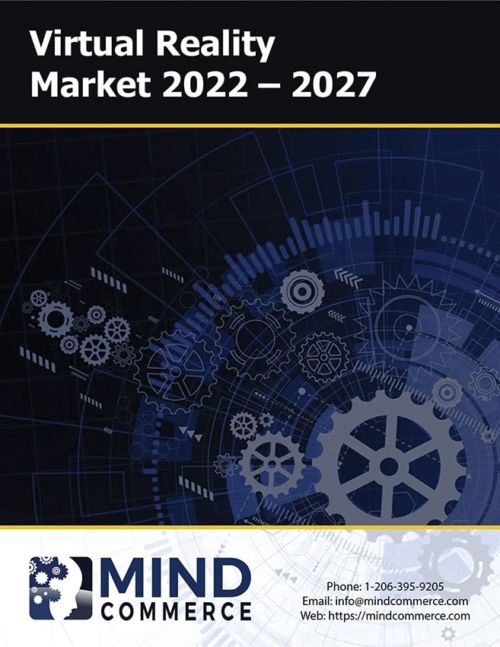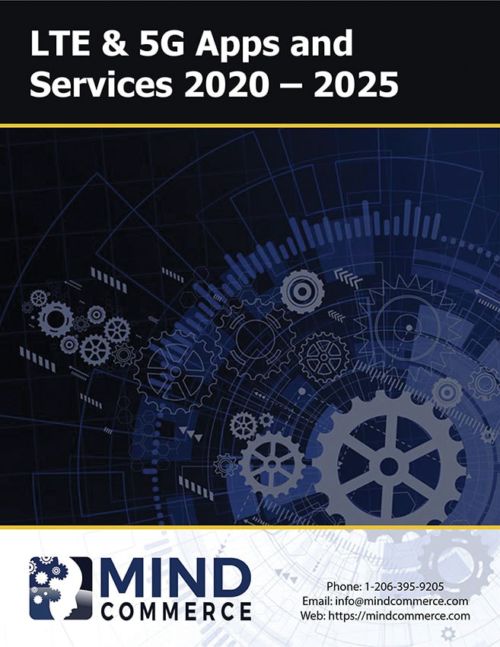Description
Human Augmentation in Healthcare represents mechanical and electronic additions to the human body to improve various body functions. In the healthcare sector, augmentation may include bionics, organ replacement, exoskeletons, and robotics to provide assistance to those that have physical impairments. The goals of augmentation are many and varied such as rehabilitation, elder care, work and lifestyle enablement.
Human Augmentation in Healthcare Market Dynamics
In many cases, the goal is to replicate biological methods and systems found in nature via electrically or mechanically powered artificial devices. Examples range from artificial organ or body part replacement to exoskeleton suit or robotics. In the case of Collaborative Robots (Co-Bots), robotics is used in collaboration with a human being to enable functions that would otherwise be prohibitive due to physical limitations.
Human Augmentation in Healthcare Market Report
This report addresses the market for Bionics, Organ Replacement, Exoskeletons, and Robotics in the healthcare sector including technology assessment, product and service review, application evaluation, industry impact assessment, and competitive analysis. The report includes detailed forecasts covering many aspects of human augmentation in healthcare for 2018 through 2023.
Click Here to see all other Device and User Interface Reports
Companies in Report
20 Knots Plus Ltd (20KTS+)
Abbott Laboratories
AbbVie Inc.
Abiomed
Asahi Kasei Kuraray Medical Co. Ltd.
Baxter International
Bionic Power
Boston Scientific Corporation
Cochlear Ltd.
Edwards Lifesciences Corporation
Ekso Bionics Holdings Inc.
ExoAtlet
LivaNova PLC
Lockheed Martin Corporation
Medtronic plc
Orthofix Holdings Inc.
Ossur Corporate
Otto Bock HealthCare GmBH
RB3D
Retina Implant AG
Sarcos Corporation
Sonova Holding AG
Spring Active
SRI International
SynCardia Systems LLC
Zimmer Biomet Holdings
Table of Contents
1 Introduction
1.1 What is Bionics?
1.2 Bionics Products and Application Industry
1.3 Bionics Growth Driver
1.3.1 Healthcare Technology Advancement
1.3.2 Aging Population to Increase Organ Failure
1.3.3 Accident to Amputations
1.3.4 Exoskeleton Application
1.3.5 Substitute of Robotics
1.3.6 Government R&D Initiative
1.3.7 Increase of Income Especially in Emerging Economies
1.4 Bionics Market Limitations
1.4.1 High Cost of Device and Treatment
1.4.2 Government Regulations and Strict Approval process
1.4.3 Lack of Surgical Expertise
1.5 Bionics Impact on Society
1.5.1 Positive Impact
1.5.2 Negative Impact
2 Bionics Technology and Market Development
2.1 Medical Bionics Products
2.2 Orthotics and Prosthetics
2.3 Artificial Organ
2.4 Powered Exoskeleton
2.4.1 Medical Exoskeleton
2.4.2 Military Exoskeleton
2.4.3 Assistive Exoskeleton
2.5 Human Bionics
2.6 Mechanical vs. Electronics Bionics
2.7 Artificial Implants vs. Wearable Bionics
2.8 3D Printing and Bionics
2.9 Bionics and Artificial Intelligence
2.10 Nanotechnology and Bionics
2.11 Business Biomimetic
2.12 Cybernetic Organism
2.13 Bionics Industry Landscape
3 Bionics Market and Revenue Forecast
3.1 Combined Bionics Revenue 2018 – 2023
3.2 Bionics Revenue by Industry Vertical 2018 – 2023
3.3 Medical Bionics Revenue 2018 – 2023
3.3.1 Medical Bionics Revenue by Product Category
3.3.1.1 Orthopedic Bionics Revenue by Product Type
3.3.1.1.1 Bionics Limbs Revenue by Product Type
3.3.1.1.2 Bionics Lower Limbs Revenue by Product Type
3.3.1.1.3 Electrical Bone Growth Stimulators Revenue by Product Type
3.3.1.2 Cardiac Bionics Revenue by Product Type
3.3.1.2.1 Artificial Organ Revenue by Product Type
3.3.1.2.2 Artificial Heart Valves Revenue by Product Type
3.3.1.2.3 Bionics Pacemaker Revenue by Product Type
3.3.1.2.4 Bionics Ventricular assist device (VADs) Revenue by Product Type
3.3.1.3 Neural/Brain Bionics Revenue by Product Type
3.3.1.3.1 Bionics Internal Neurostimulators Revenue by Product Type
3.3.1.4 Bionics Ear Revenue by Product Type
3.3.2 Medical Bionics Revenue by Application Type
3.3.2.1 Implantable Medical Bionics Revenue by Product Type
3.3.2.2 Externally Worn Medical Bionics Revenue by Product Type
3.3.3 Medical Bionics Revenue by Technology Type
3.3.3.1 Medical Mechanical Bionics Revenue by Product Type
3.3.3.2 Medical Electronic Bionics Revenue by Product Type
3.3.4 Medical Bionics Revenue by End User Type
3.3.5 Medical Bionics Revenue by Region
3.3.5.1 North America Medical Bionics Revenue by Country
3.3.5.2 Europe Medical Bionics Revenue by Country
3.3.5.3 APAC Medical Bionics Revenue by Country
3.3.5.3.1 SEA Medical Bionics Revenue by Country
3.3.5.4 LAMEA Medical Bionics Revenue by Country
3.4 Defense Exoskeleton Bionics Revenue 2018 – 2023
3.4.1 Defense Exoskeleton Bionics Revenue by Product Category
3.4.2 Defense Exoskeleton Bionics Revenue by Technology Type
3.4.3 Defense Exoskeleton Bionics Revenue by Region
3.4.3.1 North America Defense Exoskeleton Bionics Revenue by Country
3.4.3.2 APAC Defense Exoskeleton Bionics Revenue by Country
3.4.3.3 Europe Defense Exoskeleton Bionics Revenue by Country
3.4.3.4 ROW Defense Exoskeleton Bionics Revenue by Country
4 Company and Analysis
4.1 Abbott Laboratories
4.2 AbbVie Inc.
4.3 Abiomed
4.4 Asahi Kasei Kuraray Medical Co. Ltd.
4.5 Baxter International
4.6 Zimmer Biomet Holdings
4.7 Boston Scientific Corporation
4.8 Cochlear Ltd.
4.9 Edwards Lifesciences Corporation
4.10 Ekso Bionics Holdings Inc.
4.11 LivaNova PLC
4.12 Medtronic plc
4.13 Orthofix Holdings Inc.
4.14 Otto Bock HealthCare GmBH
4.15 Retina Implant AG
4.16 Sonova Holding AG
4.17 Ossur Corporate
4.18 SynCardia Systems LLC
4.19 20 Knots Plus Ltd (20KTS+)
4.20 Bionic Power
4.21 ExoAtlet
4.22 Lockheed Martin Corporation
4.23 RB3D
4.24 Sarcos Corporation
4.25 Spring Active
4.26 SRI International
5 Conclusions and Market Outlook
5.1 Real Life Bionic Human
5.2 Human Assistance
5.3 Cloud Bionics
Tables
Table 1: Global Bionics Revenue by Industry Vertical 2018 – 2023
Table 2: Global Medical Bionics Revenue by Product Category 2018 – 2023
Table 3: Global Orthopedic Bionics Revenue by Product Type 2018 – 2023
Table 4: Global Bionics Limbs Revenue by Product Type 2018 – 2023
Table 5: Global Bionics Lower Limbs Revenue by Product Type 2018 – 2023
Table 6: Global Electrical Bone Growth Stimulators Revenue by Product Type 2018 – 2023
Table 7: Global Cardiac Bionics Revenue by Product Type 2018 – 2023
Table 8: Global Artificial Organs Revenue by Product Type 2018 – 2023
Table 9: Global Artificial Heart Valves Revenue by Product Type 2018 – 2023
Table 10: Global Bionics Pacemaker Revenue by Product Type 2018 – 2023
Table 11: Global Bionics Ventricular assist device (VADs) Revenue by Product Type 2018 – 2023
Table 12: Global Neural/Brain Bionics Revenue by Product Type 2018 – 2023
Table 13: Global Bionics Internal Neurostimulators Revenue by Product Type 2018 – 2023
Table 14: Global Bionics Ear Revenue by Product Type 2018 – 2023
Table 15: Global Medical Bionics Revenue by Application Type 2018 – 2023
Table 16: Global Implantable Medical Bionics Revenue by Product Type 2018 – 2023
Table 17: Global Externally Worn Medical Bionics Revenue by Product Type 2018 – 2023
Table 18: Global Medical Bionics Revenue by Technology Type 2018 – 2023
Table 19: Global Medical Mechanical Bionics Revenue by Product Type 2018 – 2023
Table 20: Global Medical Electronic Bionics Revenue by Product Type 2018 – 2023
Table 21: Global Medical Bionics Revenue by End User Type 2018 – 2023
Table 22: Medical Bionics Revenue by Region 2018 – 2023
Table 23: North America Medical Bionics Revenue by Country 2018 – 2023
Table 24: Europe Medical Bionics Revenue by Country 2018 – 2023
Table 25: APAC Medical Bionics Revenue by Country 2018 – 2023
Table 26: SEA Medical Bionics Revenue by Country 2018 – 2023
Table 27: LAMEA Medical Bionics Revenue by Country 2018 – 2023
Table 28: Global Defense Exoskeleton Bionics Revenue by Product Category 2018 – 2023
Table 29: Global Defense Exoskeleton Revenue by Technology Type 2018 – 2023
Table 30: Defense Exoskeleton Bionics Revenue by Region 2018 – 2023
Table 31: North America Defense Exoskeleton Bionics Revenue by Country 2018 – 2023
Table 32: APAC Defense Exoskeleton Bionics Revenue by Country 2018 – 2023
Table 33: Europe Defense Exoskeleton Bionics Revenue by Country 2018 – 2023
Table 34: ROW Defense Exoskeleton Bionics Revenue by Country 2018 – 2023
Payment Options
Mind Commerce offers flexible and convenient methods for ordering research and paying for purchases:
- Credit Card: Major credit cards via secure online, fax, or over the phone – Read More
- Purchase Order: We accept corporate PO to initiate a research order – Read More
- Prepayment: Purchase prepaid credit for future research requests – Read More
- Payment via Check, ACH, or Wire: Electronica of physical check – Read More
- Alternative Payments: Payment via a client’s PayPal account – Read More






